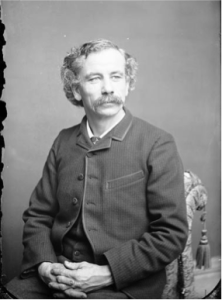When someone mentions Wisconsin Dells, what’s the first thing that pops into your mind? Water parks? Roller coasters? Stories your grandma told you about some funky rock formations? While all of these are certainly true, the Wisconsin Dells have more to offer than just tourist attractions and surrealistic sandstone. The Dells have a long and rich history that is often overshadowed by the city’s own marketing campaigns. Home to the Ho-Chunk people since time immemorial, the region is chock full of opportunities to learn about their culture—past and present.

Hidden downtown is the H. H. Bennett studio, where the artifacts of the eponymous photographer are preserved. Bennett’s pictures of the Dells are iconic, but less well known is his interest in the nearby Ho-Chunk community. He sought to preserve the Ho-Chunk through photography, laboring under the false belief that theirs was a vanishing people. At any rate, the photographs do paint a portrait, if you will, of their lives at the turn of the twentieth century, even if his motivation behind creating them was misguided.
As informative as the Bennett studio was about the history of the Ho-Chunk nation, the House of Wellness stands as testament to the nation’s present-day impact on the surrounding region. Dedicated to the health and well-being of tribal members and their loved ones, the center features state-of-the-art medical and athletic facilities, as well as cultural resources. Channeling his inner tour guide, Lance Talmadge showed us the lay of the land at the facility, all while walking skillfully in reverse. Later, Josie Lee shared with us the story of the Ho-Chunk people, along with certain aspects of their culture –aspects that those outside the community aren’t likely to learn about anyplace else.
An important part of our experience in TLAM is not only to gain an understanding of indigenous concerns, but to form lasting relationships within communities, as well. To see individuals in photographs is to see them through the unique lens of those who captured their image, whatever that lens might be. To read about them in books is to understand them through the naturally biased pen of whoever chose to write about them. Such experiences are important, but are almost always culturally skewed. It’s up to us to dislodge ourselves from that notion, because only through interacting with people firsthand can we begin to understand them.
-Erin Hughes
